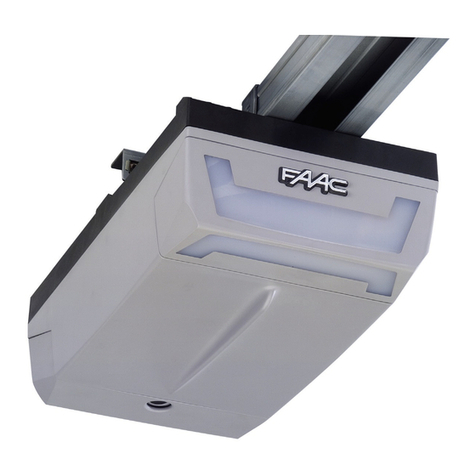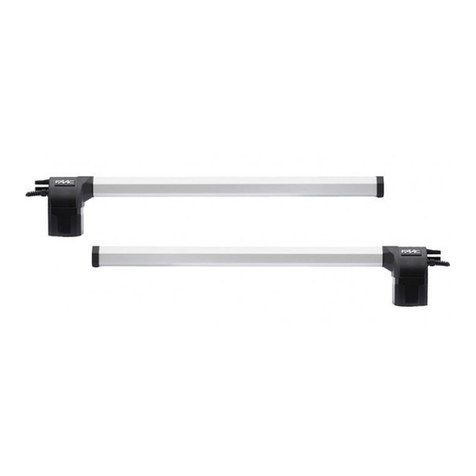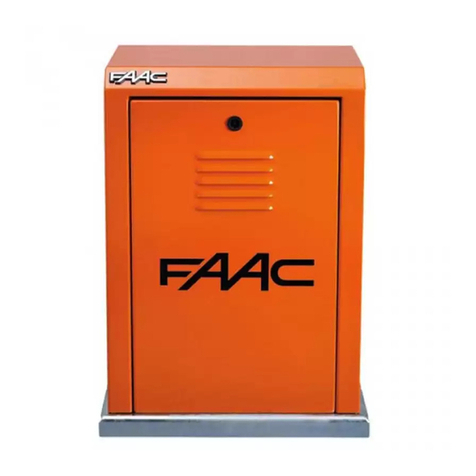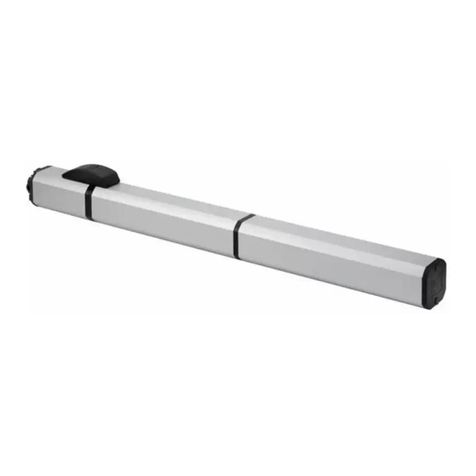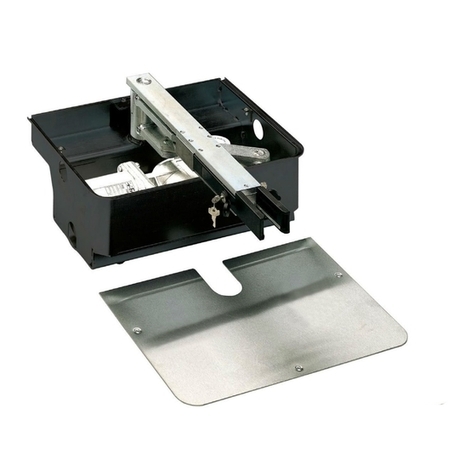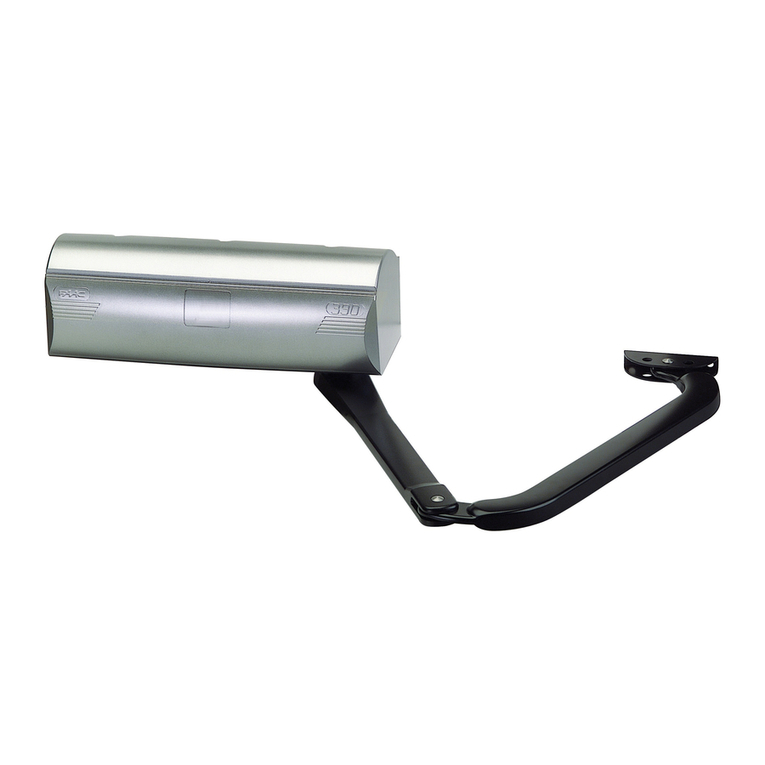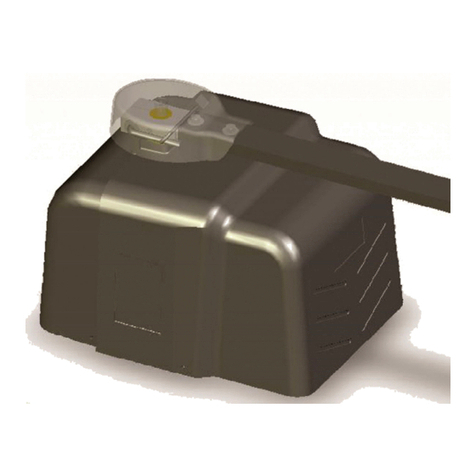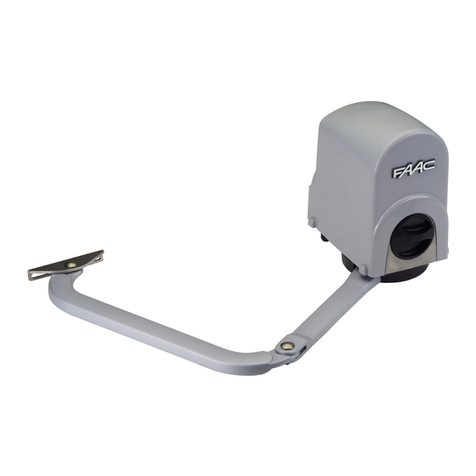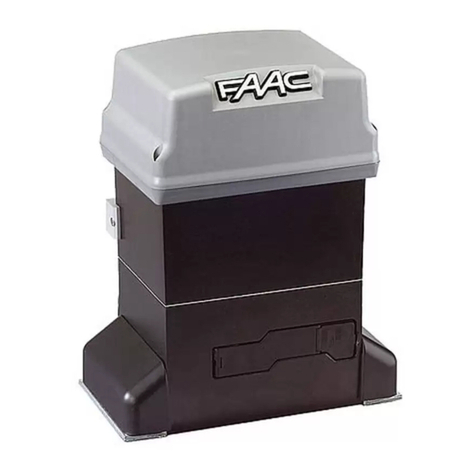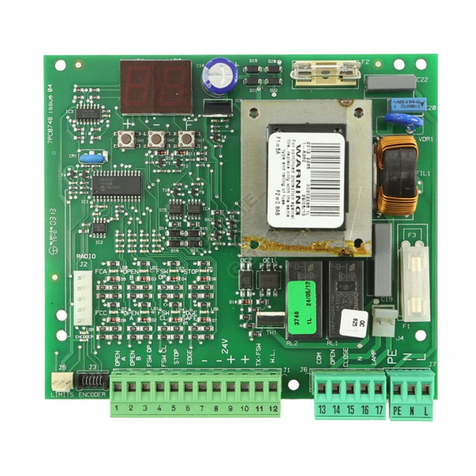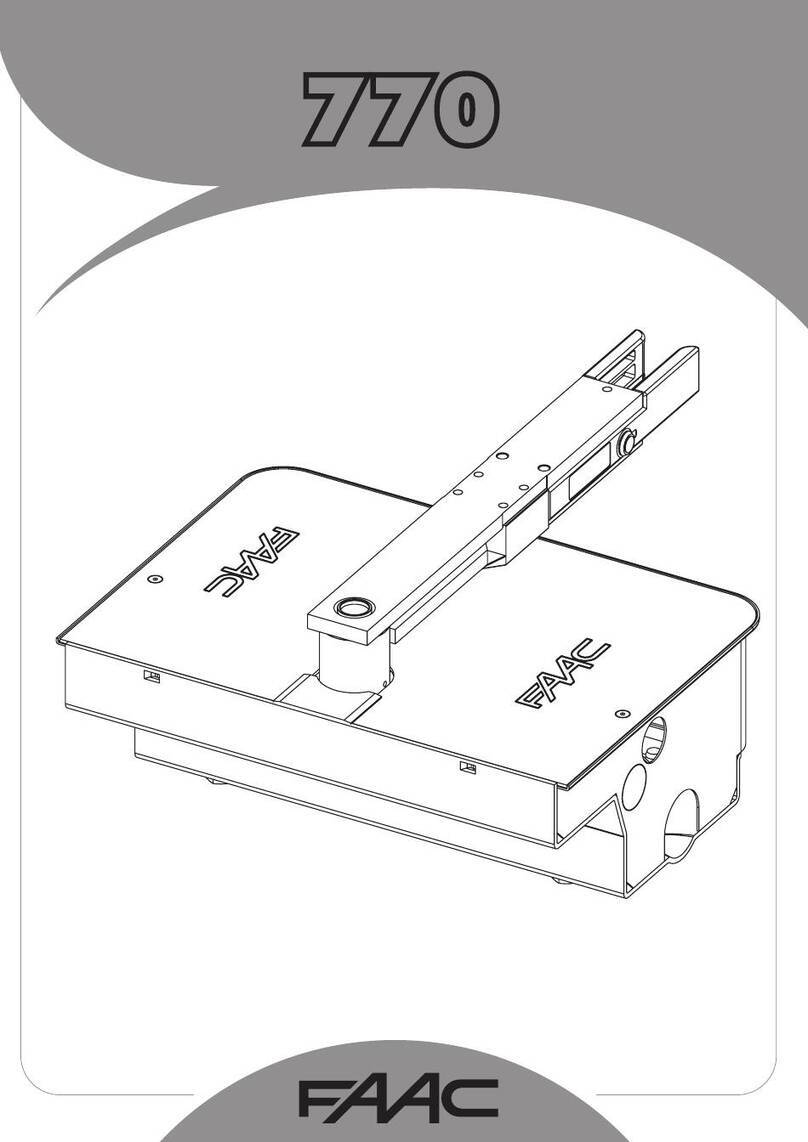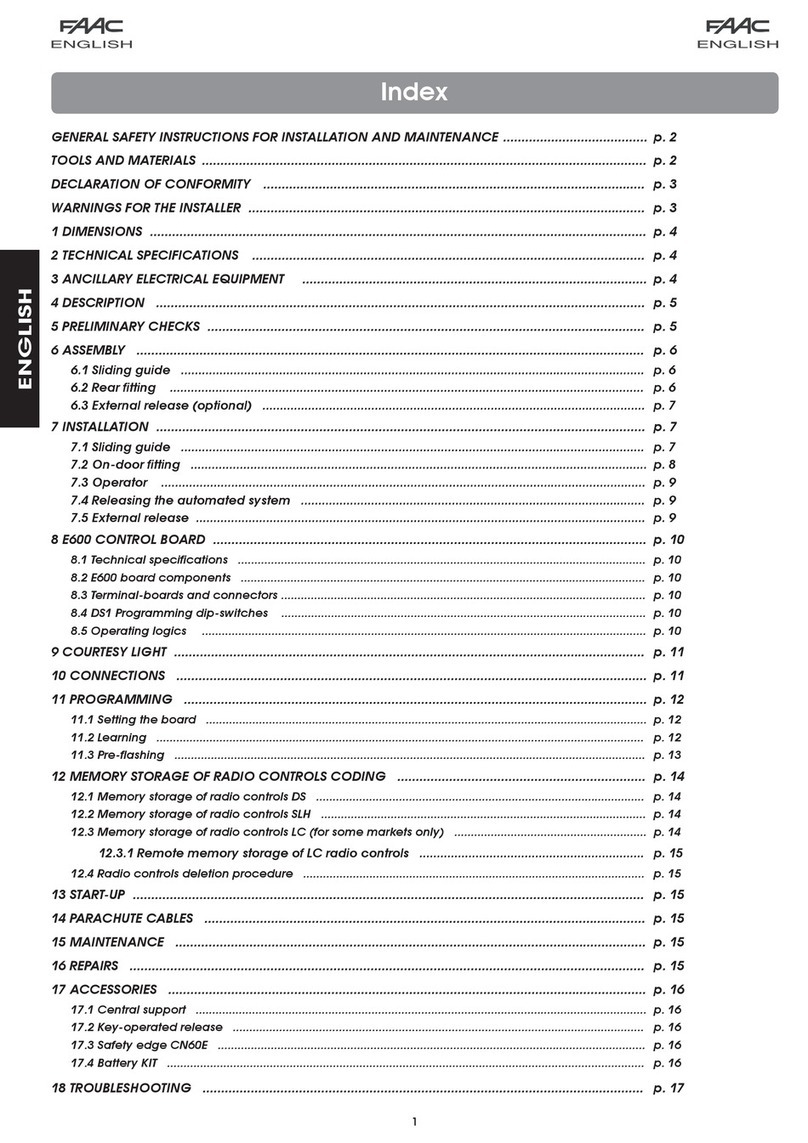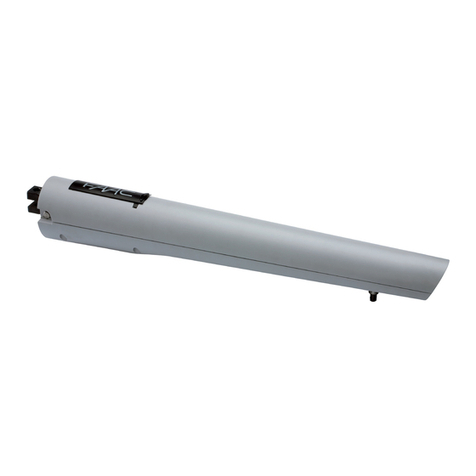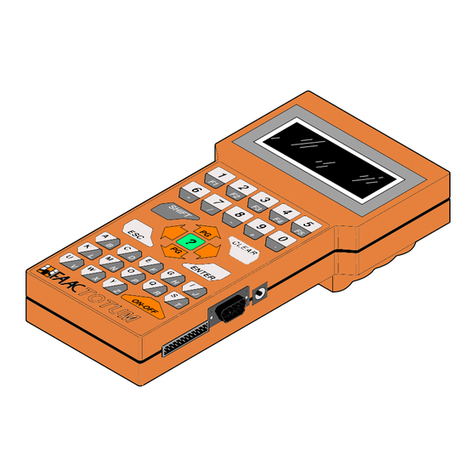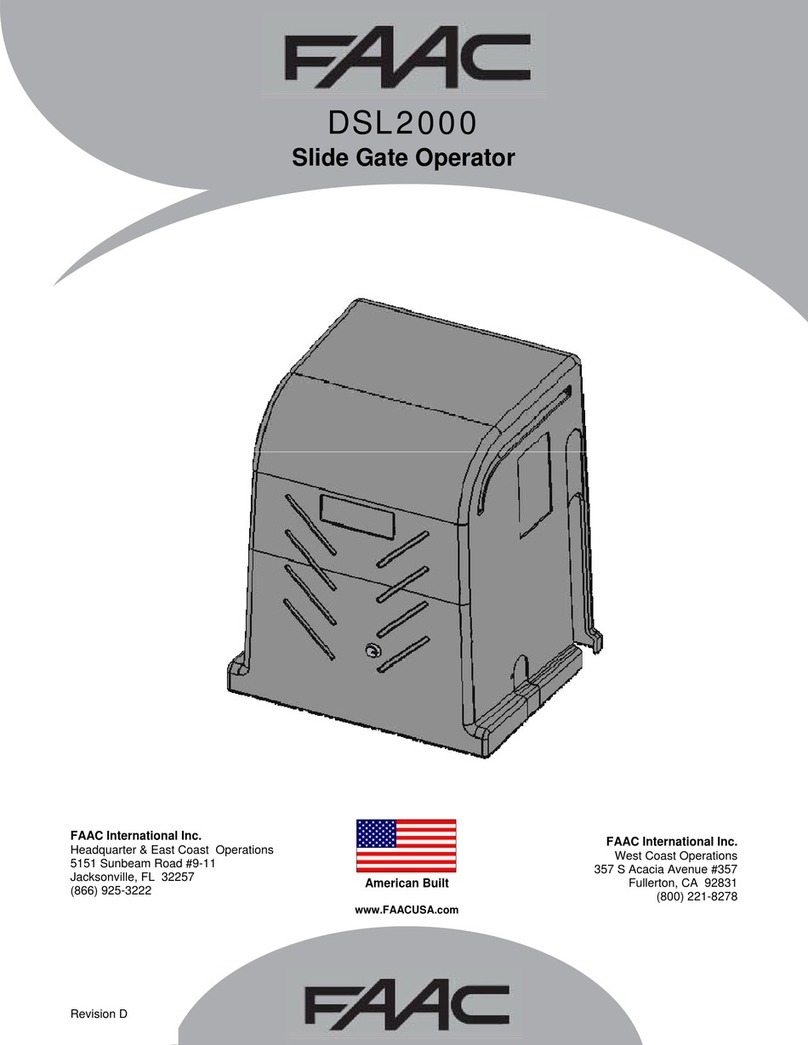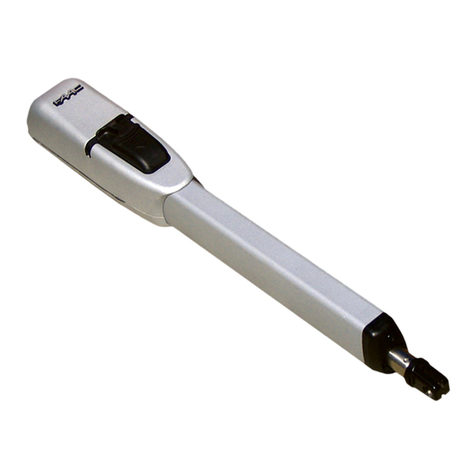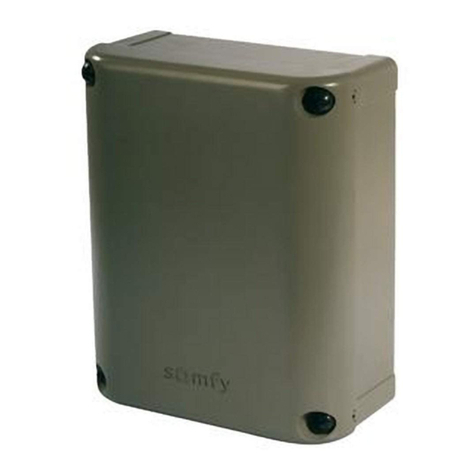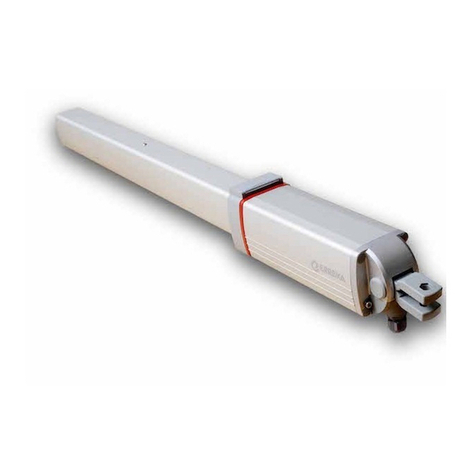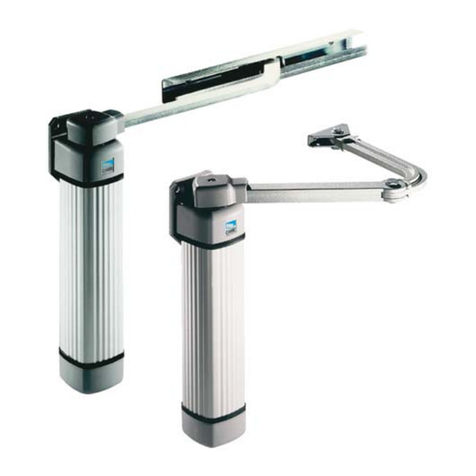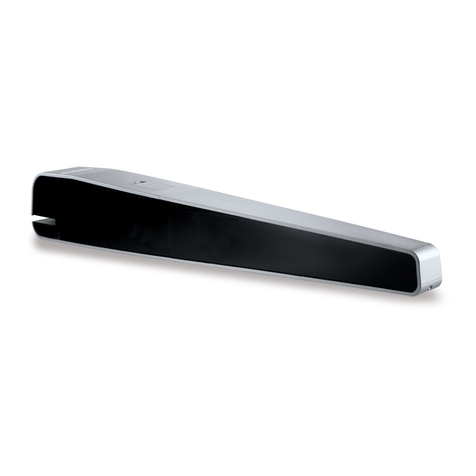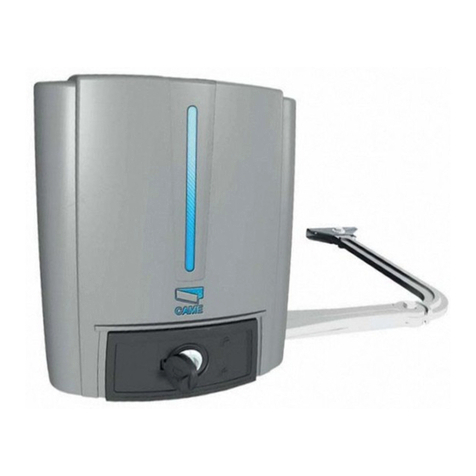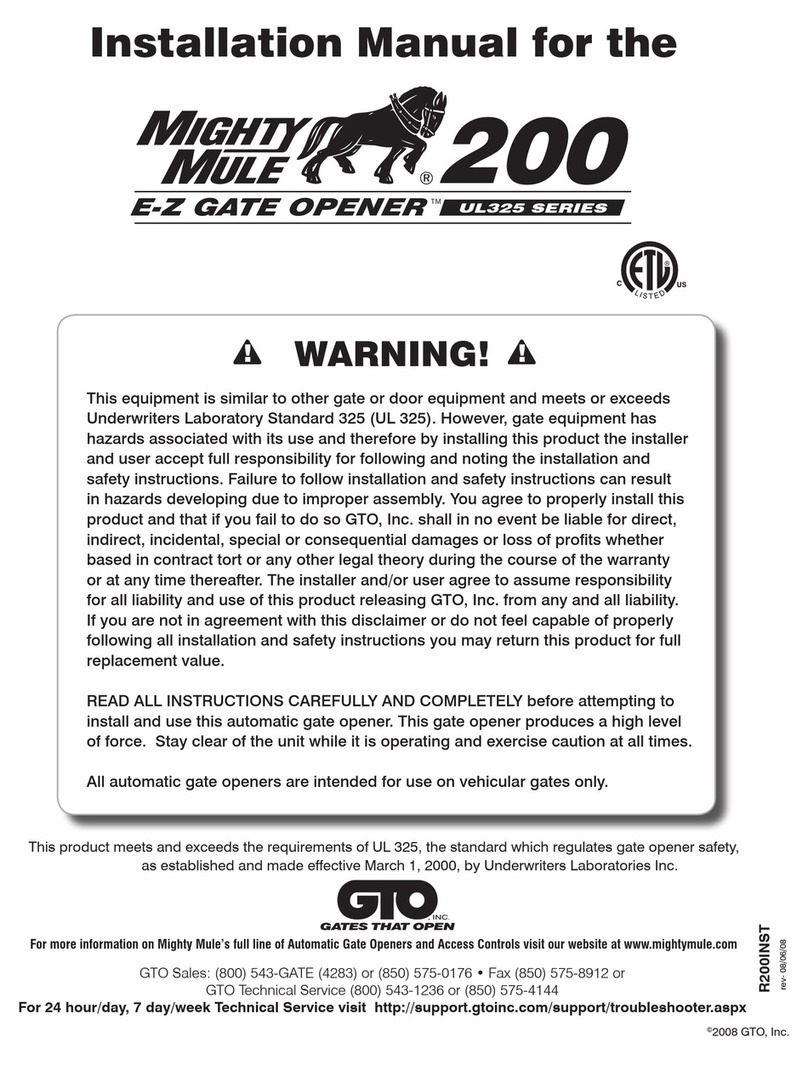1
ENGLISH
1) ATTENTION! To ensure personal safety, carefully read following instructions.
Improper installation or misuse of the product can cause serious personal
injuries.
2) Carefully read the instructions before installing the product.
3) Packaging material (plastic, polystyrene, etc.) is a potential hazard and
must be kept out of reach of children.
4) Keep these instructions for future reference.
5) This product was designed and manufactured exclusively for the purpose
indicated in this documentation. Any other use, not expressly indicated
here, could compromise the good condition/operation of the product
and/or be a source of danger.
6) FAAC declines any responsibility for improper use or use other than that
for which the automated system was intended.
7) Do not install the equipment in an explosive atmosphere: the presence
of inflammable gas or fumes is a serious danger to safety.
8) Mechanical constructive elements must comply with the requirements
of the EN 12604 and EN 12605 standards.
In addition to their national legal regulations, countries outside the EC
must follow the above mentioned standards in order to guarantee an
adequate level of safety.
9) FAACcannotbeheldresponsibleforfailuretoobservetechnical standards
in the construction of the closing elements to be motorised nor for any
deformation which may occur during use.
10) The installation must be carried out in conformity with the EN 12453 and
EN 12445 standards.
In addition to their national legal regulations, countries outside the EC
must follow the above mentioned standards in order to guarantee an
adequate level of safety.
11) Disconnect the power supply before any operation on the system.
12) The power mains of the automated system must be fitted with a multi-pole
power switch with a switch-contact gap of at least 3 mm. The use of a 6-
A thermomagnetic switch with multi-pole switching is recommended.
13) Make sure that a differential switch with trip threshold of 0.03 A is fitted
upstream of the system.
14) Make sure that the earthing system is at the state of art and connect
it to the metallic parts of the closing system.
15) The automated system is equipped with an intrinsic anti-crushing safety
device of the torque control type. Its tripping threshold must be verified
according to the requirements specified in the Standards listed in 10.
16) The safety devices (EN 12978) protect from the hazards caused by
mechanical movements, such as crushing, entrapment and shearing
hazards.
17) Each installation should be fitted with at least one flashing light (e.g.
FAACLIGHT) and a warning sign suitably secured to the frame structure,
in addition to the devices described in 16 above.
18) FAAC declines any responsibility regarding safety and efficient operation
of the automated system if parts other than FAAC original parts are
used.
19) Use only FAAC original parts for maintenance.
20) Do not in any way modify the automated system components.
21) The installer shall provide all information concerning the manual
operation of the system in the event of an emergency and shall
hand over to the end-user the warning instructions supplied with the
product.
22) Keep children, adults or objects away from the product while it is
operating.
23) Keepremote controls or otherpulsegeneratorsoutofreach of children, to
prevent the automated system from being activated unintentionally.
24) Transit is permitted only when the automated system is non in
operation.
25) The automated system cannot be repaired/adjusted by the end-user;
these operations can only be carried out by qualified personnel.
26) Maintenance: the functional check of the system must be carried out
at least every six months; pay special attention to the good working
condition of the release and safety devices (including, where foreseen,
the thrust force of the operator).
27) Feed the automation system only when explicitly stated.
28) Anything not expressly specified in these instructions is not permitted.
IMPORTANT INSTRUCTIONS
FOR THE INSTALLER GENERAL SAFETY
CE DECLARATION OF CONFORMITY FOR MACHINES
(DIRECTIVE 2006/42/EC)
Manufacturer: FAAC S.p.A.
Address: Via Calari, 10 - 40069 Zola Predosa BOLOGNA - ITALY
Declares that: Operator mod. S450H
is built to be integrated into a machine or to be assembled with other machinery to create a machine under the provisions
of Directive 2006/42/EC
complies with the essential safety requirements of the following EEC directives:
2006/95/EC Low Voltage Directive
2004/108/EC Electromagnetic Compatibility Directive
It further declares that it is not allowed to put the device in operation until the machine it has to be integrated into or of which it is going
to become an integral part has been identified and its conformity has been declared under the provisions of the Directive 2006/42/EEC
and subsequent amendments.
Bologna, 01.02.11
The Managing Director
A. Marcellan
